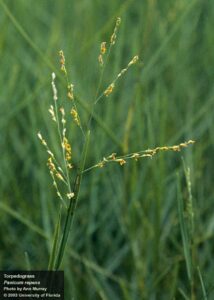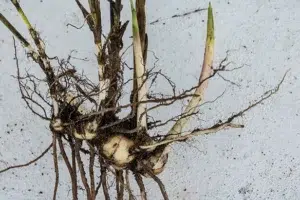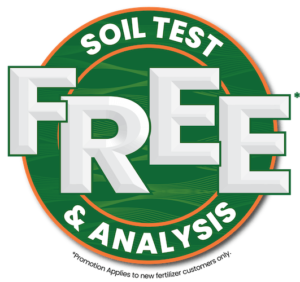If you’re tending to a garden or lawn, especially in a tough climate, you might know about the persistent adversary called torpedo grass, or panicum repens. This resilient and fast-spreading weed can challenge even the most diligent homeowners, becoming a formidable foe in vibrant landscapes.
What is Torpedo Grass?
Torpedo grass is a perennial grass species native to Africa and Asia but has become invasive in many parts of the United States, including Texas. It thrives in warm, humid environments, making Houston’s subtropical climate an ideal breeding ground. The weed gets its name from its sharp, pointed rhizomes that allow it to pierce through soil and other plants, spreading quickly and aggressively.
One of the most challenging aspects of torpedo grass is its ability to grow in a variety of conditions. Whether your lawn is dry, wet, shaded, or sun-drenched, torpedo grass will find a way to establish itself. It’s commonly found in lawns, gardens, and even along the edges of ponds and ditches, making it a widespread problem.
Why is Torpedo Grass So Difficult to Eradicate?
Torpedo grass is not your average weed. Its deep root system and aggressive growth habits make it extremely difficult to control, let alone eradicate. Here are a few reasons why Houston homeowners find themselves in a constant battle with this stubborn grass:
1. Rhizome Network of Torpedo Grass
The underground rhizomes can extend several feet beyond the visible plant. This means that even if you remove the above-ground growth, the plant can regenerate from the rhizomes left behind. These rhizomes can also survive harsh conditions, making them nearly impossible to kill without the right approach.
2. Herbicide Resistance
Many common herbicides are ineffective against torpedo grass. While some products may kill the visible parts of the plant, the torpedo grass rhizomes often remain unaffected, leading to regrowth. Systemic herbicides, which are absorbed by the plant and travel down to the roots, are often required for effective control of torpedo grass, but even these can take multiple applications.
3. Rapid Spread

Torpedo grass spreads through seeds, rhizomes, and plant fragments. Torpedo grass rhizomes can extend far beyond the visible plant, while seeds disperse easily through wind, water, or even on shoes and tools. Mowing or cutting the grass can worsen the problem, as fragments left behind can take root and grow into new plants. This makes it essential to use careful management techniques to avoid unintentionally spreading the grass further.
4. Competition with Desirable Plants
Torpedo grass is highly competitive and can quickly outgrow desirable plants by hogging nutrients, water, and sunlight. Its dense growth forms a thick mat that shades and chokes out other plants, reducing their ability to thrive. This leads to a lawn or garden dominated by torpedo grass, which diminishes plant diversity and impacts the overall health and appearance of your outdoor space.
Strategies for Managing Torpedo Grass
While eradicating torpedo grass entirely can be an uphill battle, there are strategies that homeowners in Houston can use to manage its spread and reduce its impact on their lawns and gardens.
1. Consistent Monitoring and Removal of Torpedo Grass
Regularly inspect your lawn and garden for signs of torpedo grass. Early detection is key to preventing a full-blown infestation. Hand-pulling small patches can be effective, but make sure to remove as much of the root system as possible.
2. Torpedo Grass Targeted Herbicide Application
In some cases, eliminating torpedo grass may require the use of a non-selective herbicide. However, these herbicides can damage or kill any plant they touch, including healthy grass. To avoid harming your desirable plants, do not apply the herbicide to your entire lawn. Instead, use a targeted approach by spot-treating only the affected areas. Keep in mind that this method may also kill healthy grass in the treated spots, so proceed with caution to effectively manage the torpedo grass while minimizing damage to your lawn & landscape.
3. Mulching

In garden beds, a thick layer of mulch can help suppress the growth of torpedo grass by blocking sunlight and reducing its ability to establish itself. However, this is not a foolproof solution, as the torpedo grass rhizomes can still penetrate the mulch if they are already established.
4. Proper Lawn Care
Maintaining a healthy, dense lawn can help prevent the establishment of torpedo grass. Regular mowing, fertilization, and proper watering can make your lawn less hospitable to weeds in general. However, avoid mowing areas infested with torpedo grass to prevent spreading it further.
5. Professional Help
In severe cases, it may be worth consulting with a professional lawn care service that has experience dealing with torpedo grass. They can provide more aggressive treatments and strategies tailored to your specific situation.
Conclusion
Torpedo grass is one of the most challenging weeds to manage in Houston, but with persistence and the right approach, it’s possible to keep it under control. The key is to act quickly, stay vigilant, and use a combination of strategies to outsmart this resilient invader. Remember, in the battle against torpedo grass, consistency is your best ally.









